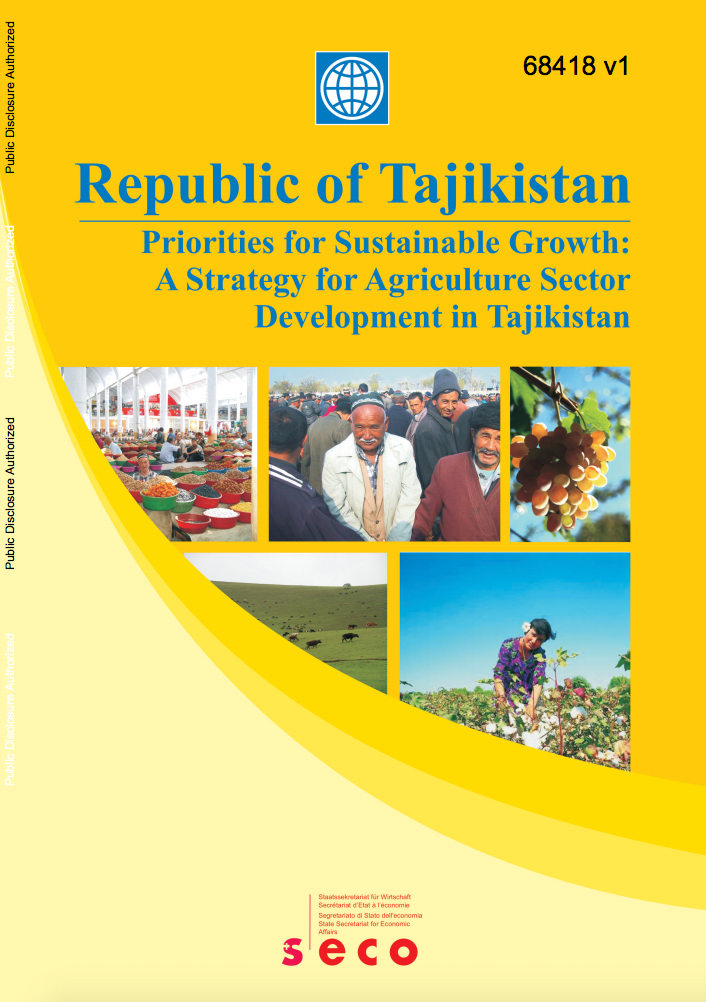The World Bank is a vital source of financial and technical assistance to developing countries around the world. We are not a bank in the ordinary sense but a unique partnership to reduce poverty and support development. The World Bank Group has two ambitious goals: End extreme poverty within a generation and boost shared prosperity.
- To end extreme poverty, the Bank's goal is to decrease the percentage of people living on less than $1.25 a day to no more than 3% by 2030.
- To promote shared prosperity, the goal is to promote income growth of the bottom 40% of the population in each country.
The World Bank Group comprises five institutions managed by their member countries.
The World Bank Group and Land: Working to protect the rights of existing land users and to help secure benefits for smallholder farmers
The World Bank (IBRD and IDA) interacts primarily with governments to increase agricultural productivity, strengthen land tenure policies and improve land governance. More than 90% of the World Bank’s agriculture portfolio focuses on the productivity and access to markets by small holder farmers. Ten percent of our projects focus on the governance of land tenure.
Similarly, investments by the International Finance Corporation (IFC), the World Bank Group’s private sector arm, including those in larger scale enterprises, overwhelmingly support smallholder farmers through improved access to finance, inputs and markets, and as direct suppliers. IFC invests in environmentally and socially sustainable private enterprises in all parts of the value chain (inputs such as irrigation and fertilizers, primary production, processing, transport and storage, traders, and risk management facilities including weather/crop insurance, warehouse financing, etc
For more information, visit the World Bank Group and land and food security (https://www.worldbank.org/en/topic/agriculture/brief/land-and-food-security1
Resources
Displaying 2881 - 2885 of 4907Moving Up the Value Chain : A Study of Malaysia's Solar and Medical Device Industries
This report responds to a request by the
Government of Malaysia to examine how Malaysia can move up
the value chain in the solar and medical device industries.
Through the lens of long-term development, the overall
growth performance of the Malaysian economy has been a
resounding success story. The Commission on growth and
development listed Malaysia as one of only 13 countries that
registered sustained growth of 7 percent or more for a
Priorities for Sustainable Growth : A Strategy for Agriculture Sector Development in Tajikistan
Agriculture sector growth has made a
powerful contribution to post-war economic recovery in
Tajikistan, accounting for approximately one third of
overall economic growth from 1998 to 2004. Sector output
increased by 65 percent in real terms during this period,
and has now returned to the level extant at independence in
1990. Total Factor Productivity (TFP) has also increased, by
3 percent per year. Despite this progress, there is
Madagascar - Three Years into the Crisis : An Assessment of Vulnerability and Social Policies and Prospects for the Future, Volume 2. Background Papers
The report is divided into two volumes.
The first volume includes the fundamental content of the
report. It is organized as follows. Chapter one provides a
conceptual framework to analyze risk and vulnerability and
provides a definition of social protection. Chapter two
assesses the main risks faced by the Malagasy population as
well as its vulnerability profile. Chapter three reviews
Madagascar's social protection policies, the
Republic of Yemen - Joint Social and Economic Assessment
This Joint Social and Economic
Assessment (JSEA) has been prepared in response to a request
from the Ministry of Planning and International Cooperation
(MoPIC), and was undertaken jointly by the World Bank, the
United Nations, the European Union, and the Islamic
Development Bank. The JSEA's main purpose is to assess
the social and economic impact of the crisis in Yemen, and
to identify challenges and key priorities for early
Priorities for Sustainable Growth : A Strategy for Agriculture Sector Development in Tajikistan, Technical Annex 2. Cotton Sector in the Global Context
Agriculture sector growth has made a
powerful contribution to post-war economic recovery in
Tajikistan, accounting for approximately one third of
overall economic growth from 1998 to 2004. Sector output
increased by 65 percent in real terms during this period,
and has now returned to the level extant at independence in
1990. Total Factor Productivity (TFP) has also increased, by
3 percent per year. Despite this progress, there is







